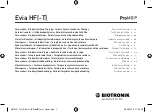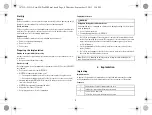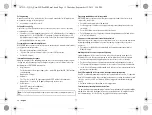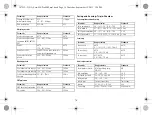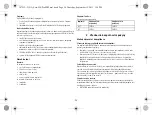
12
• When programming large parameter values, take into account that the battery
depletion indicator ERI will be reached very early because the service time of the
battery may be reduced to less than 1 year.
5 After
Implantation
Follow-up
Follow-up intervals
Follow-ups must be performed at regular, agreed intervals.
• Following the lead ingrowth phase, approximately 3 months after implantation,
the first follow-up should be carried out by the physician using the programmer
(in-office follow-up).
• The next in-office follow-up should be carried out once a year and no later than
12 months after the last in-office follow-up.
Follow-up with BIOTRONIK Home Monitoring
®
Monitoring using the Home Monitoring function does not serve to replace regular in-
office appointments with the physician required for other medical reasons.
Follow-up supported by Home Monitoring can be used to functionally replace in-office
follow-up under the following conditions:
• The patient was informed that the physician must be contacted if symptoms worsen
or if new symptoms arise despite of the use of the Home Monitoring function.
• Device messages are transmitted regularly.
• The physician decides whether the data transmitted via Home Monitoring with
regard to the patient's clinical condition as well as the technical state of the device
system are sufficient. If not, an in-office follow-up has to be carried out.
Possible early detection due to information gained via Home Monitoring may necessi-
tate an additional in-office follow-up. For example, the data may indicate at an early
stage lead problems or a foreseeable end of service time (ERI). Furthermore, the data
could provide indications of previously unrecognized arrhythmias or modification of the
therapy by reprogramming the device.
Follow-up with the programmer
Use the following procedure for in-house follow-up:
Notes for the Physician
Patient ID card
A patient ID card is included in the delivery.
• Provide the patient with the patient ID card.
• Request that patients contact the physician in case of uncertainties.
Prohibitive signs
Places with prohibitive signs must be avoided.
• Draw the patient's attention to prohibitory signs.
Possible sources of interference
Electromagnetic interference should be avoided in daily activities. Sources of inter-
ference should not be brought into close proximity with the device.
• Draw the patient's attention to special household appliances, security checkpoints,
anti-theft alarm systems, strong electromagnetic fields, cell phones, and transmit-
ters among other things.
• Request patients to do the following:
— Use cell phones on the side of their body that is opposite of the device.
— Keep the cell phone at least 15 cm away from the device both during use and
when stowing.
1
Record and evaluate the external ECG.
2
Check the sensing and pacing function.
3
Interrogate the device.
4
Evaluate the status and automatically measured follow-up data.
5
Possibly evaluate statistics and IEGM recording.
6
Manually perform standard tests if necessary.
7
Possibly customize program functions and parameters.
8
Transmit the program permanently to the device.
9
Print and document follow-up data (print report).
10
Finish the follow-up for this patient.
387513--D_GA_Evia-HF-ProMRI_mul.book Page 12 Thursday, September 12, 2013 3:34 PM

